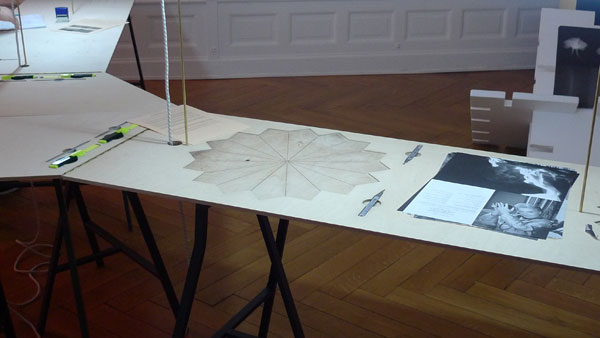The anxious prop, case 3: the black swan issue
a publication assembly line, Berlin, 2010
The open assembly line worked. The three axis parti inspired by Paul Ryan’s threeing technique and earthscore notation facilitated the topology. The work was pushed forth by a section of the collective, Luis Berríos-Negrón, Elín Hansdóttir, Mendel Heit, Fotini Lazaridou-Hatzigoga (each on one station cutting/folding/binding, the fourth being outside, ie. in a continuous aleatory reading of Cortazar’s Hopscotch, not unlike a cuban cigar factory), along with the product. The assembly of the feuilleton, as site itself, completely absorbed the boundary between audience and collective. The whole thing took a life of its own, as both the content and the dynamic unfolded seamlessly.
The feuilleton, Case 3: The Black Swan Issue, included contributions by Morgan Belenguer, Miodrag Kuc, urbikon, and Leah Whitman-Salkin, with external contributions by Ross Adams, Hilary Brown, François Bucher, Jean Gardner, Mark Jarzombek, Pia Marais, Walter Mercado, Paul Ryan, and Hannes Schmidt.
See also: www.theanxiousprop.org

